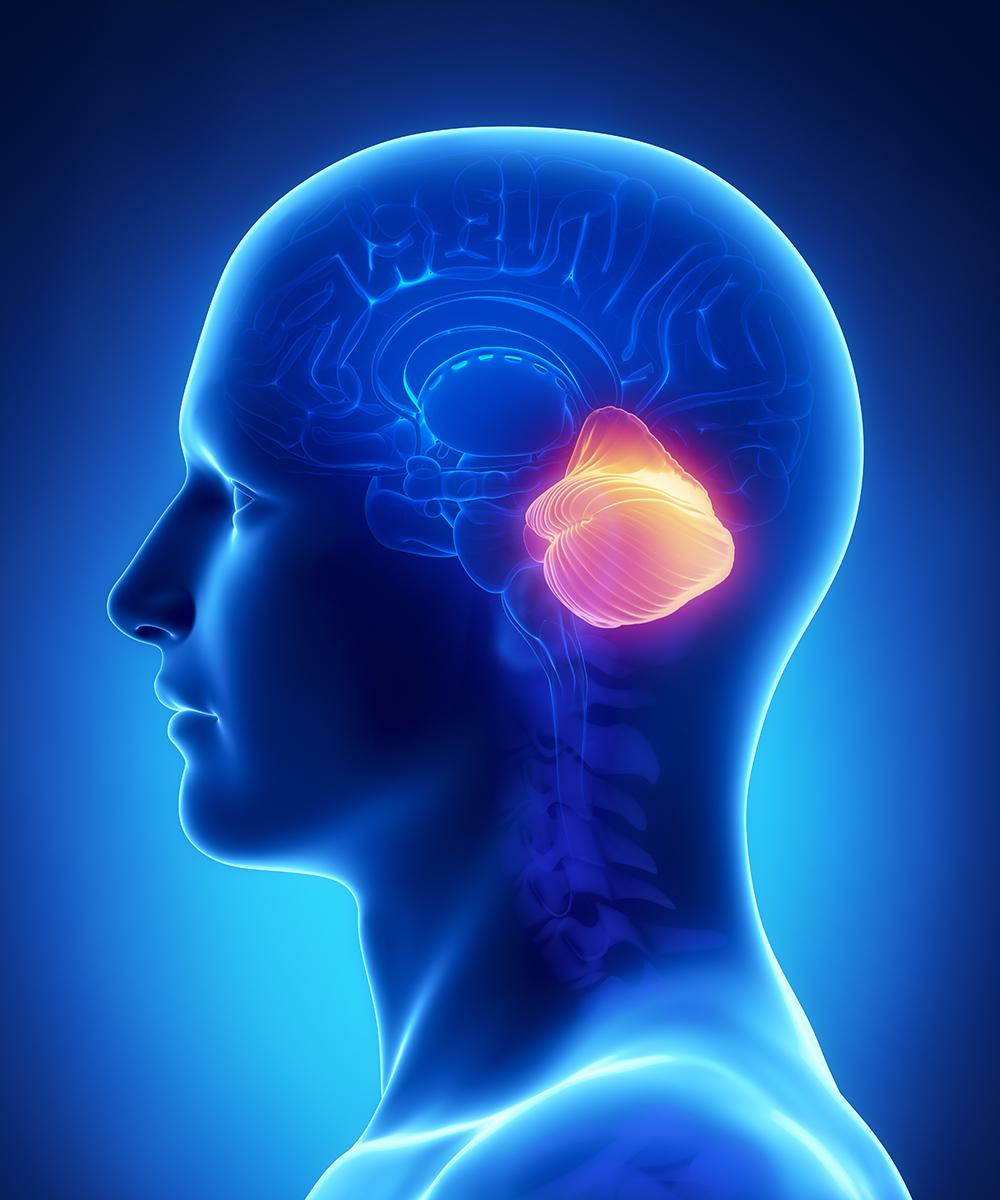What is the Cerebellum?

While every brain structure has the potential to be a valuable training target for a medical fitness professional, the cerebellum should always be a high priority consideration when trying to help clients and patients accomplish their pain and performance goals. The cerebellum, whose name means “little brain,” is located at the back and bottom of the brain, and while it makes up only 10% of the brain’s volume, it houses 80% of the brain’s total neurons. Indeed, this powerful part of your neuroanatomy is the embodiment of the expression “big things come in small packages”! While the cerebellum makes important contributions to cognitive, emotional, hormonal, and autonomic functions, we’re going to focus right now on its role in movement.
To keep it simple, we say that the cerebellum is responsible for the ABCs of movement: accuracy, balance, and coordination. Anytime you see a great golfer, a great tennis player, someone that makes an amazing catch in football, you can look at that and go “that was awesome, and they’ve probably got a great cerebellum.” If you want better balance or if you want smoother, more efficient movement, it can be valuable to evaluate and challenge the cerebellum in your training or rehabilitation program.
In the Z-Health approach, we test and stimulate the cerebellum in many different ways, but the method we’re going to begin with in this article is one that will challenge the cerebellum by challenging your movement accuracy. All you need to get started is a finger, a nose, and a cutting-edge piece of medical equipment called a Post-it Note.
How to Perform the Finger-Nose Drill
Here’s the setup we’re going to use:
- Take five Post-it Notes and draw a dot on each one with a writing utensil of your choice.
- Arrange the Post-it Notes on a wall in front of you so that there is one note directly in front of your nose, one in the upper left corner of your visual field, one in the upper right corner of your visual field, one in the lower left corner of your visual field, and one in the lower right corner of your visual field.
Steps for performing the assessment/drill:
- First, establish a baseline level of performance for something you’re interested in improving. This could be a single joint range of motion, a multi-joint range of motion like a forward bend, a strength measurement, or a pain that you’re trying to decrease on either side of the body.
- Then, with the tip of your right index finger, alternate between touching the tip of your nose and the dots on each of the five Post-it Notes. The order does not matter.
- As you are performing the drill, take note of how accurate your right arm is at touching your nose and touching the dots, and keep an eye out for tremoring as you approach the target. You will be comparing this qualitative information later between your right and left arms.
- After you have gone through every dot twice, reassess the baseline you established at the beginning to see if your range of motion, strength, or pain has improved.
- Finally, repeat the drill with the left index finger and again, take note of how well you’re able to do it and then reassess your baseline activity of interest.
What to Do with the Information
Based on which side of your body struggled the most to move accurately and smoothly or based on which side of the body most improved the separate baseline activity you were measuring, you would then want to begin adding more cerebellar stimulation for that side into your training or rehabilitation program.
Training Strategies
Perhaps the most direct way to recreate the training effect from the finger-nose assessment or address a performance deficit you observed is to simply repeat the exact same exercise at home. 10–15 repetitions performed several times a day can provide good benefits. Some other variations worth trying include:
- Using more personally interesting or logistically convenient targets
- Using a partner or coach’s fingertip as the target and adding in target movement
- Touching the targets while using your peripheral vision instead of looking directly at them
- Adding in more specific targets to hit or touch when performing gym-based exercises like overhead presses or lunges
The cerebellum is a key player in most of our brain functions, and movement can be an easy and effective way to begin to affect it. Understanding the anatomy of the cerebellum can allow you to make very targeted decisions about what body movements, what type of body movements, what head movements, and what eye movements will get your clients and patients the best and fastest results possible, but the finger-nose drill and modifying accuracy demands is a good place to start.
How to Learn More
The Z-Health curriculum takes a deep dive into the entire nervous system and teaches students the most efficient ways to assess, train, and change it. You can visit our website zhealtheducation.com to see more about us and our courses.
Hope you enjoy the drill!
Mike Golden is the Director of Education for Z-Health Performance Solutions, a world leader in innovating advanced, neurologically-centered rehabilitative and sports performance programs based on emerging research. Over the course of two decades, he has relentlessly pursued professional development through the Z-Health curriculum and in the broader fields of fitness, functional neurology, and pedagogy, and he has been leading national and international certification courses for Z-Health since 2013.

